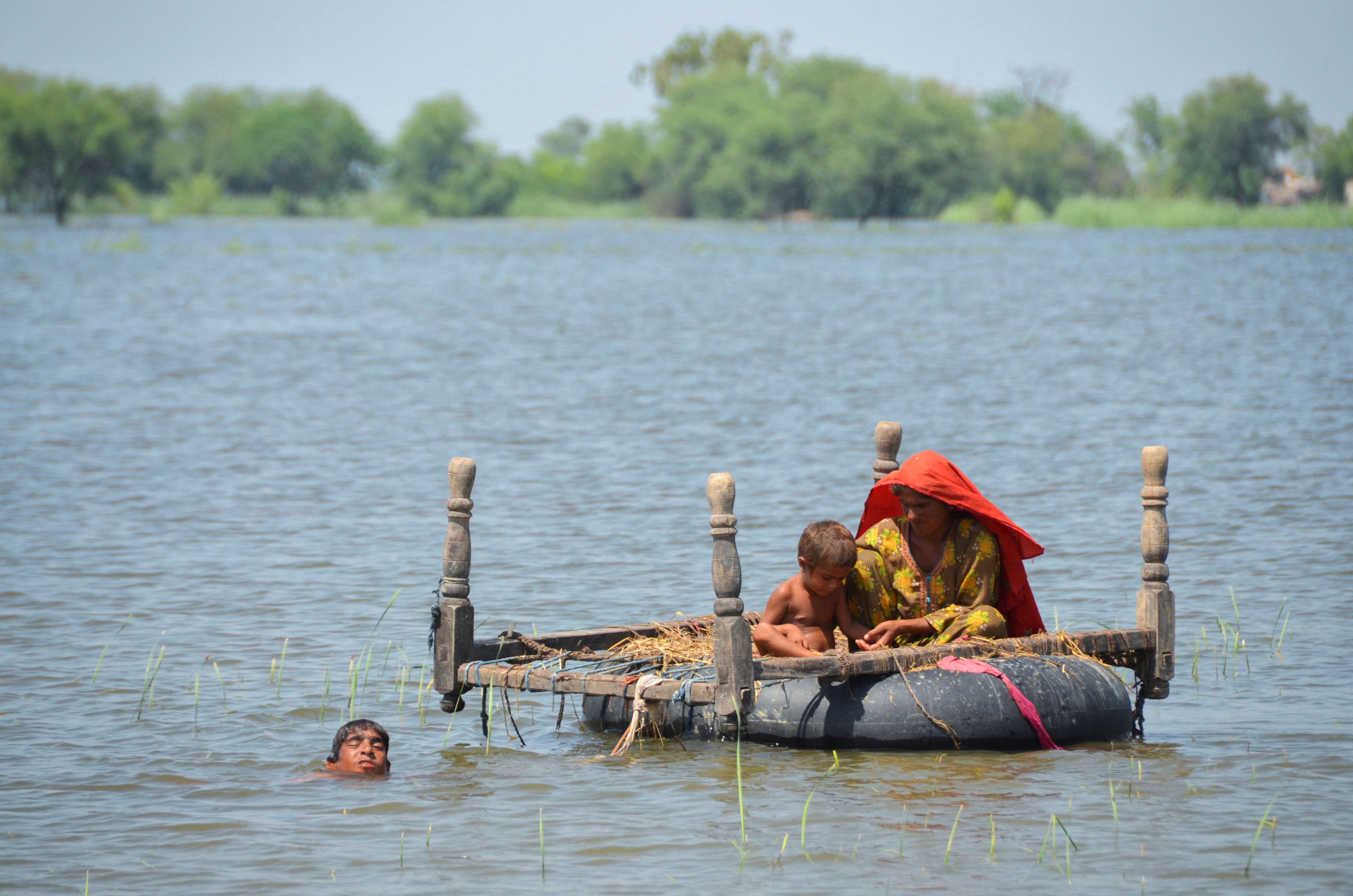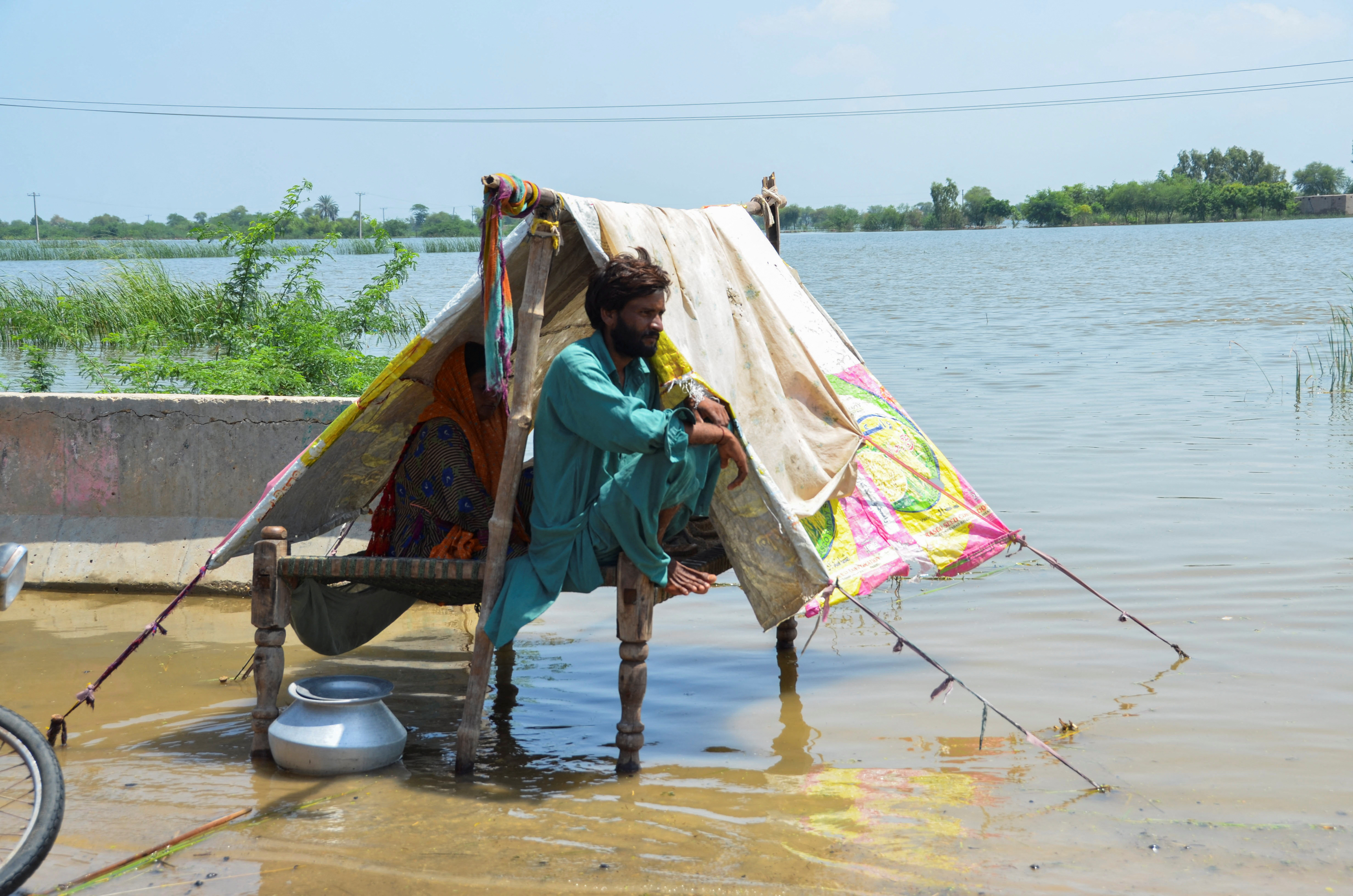
Rescue and relief operations are under way across Pakistan, as millions of people, particularly in the country’s southern and northwest regions, remained trapped by the worst floods in the South Asian country’s history.
Makeshift relief camps have sprung up all over Pakistan, in schools, on motorways and in military bases in the wake of the monsoon floods.
Farzana, a resident of Ghulam Shah village in Sindh, one of the worst-affected provinces in the country’s south, said she could no longer provide “shade for our children from the sun” as their homes had been totally submerged.
“I swear to God, there is nothing left. All our belongings have been washed away. We’re poor. Our children are sick. They are just sitting there,” she told Al Jazeera.
“We appeal to the government to help end our miseries at the soonest,” said Mohammad Safar, 38, outside his submerged home in Shikarpur in Sindh.
“The water must be drained out from here immediately so we can go back to our homes.”
There is so much water however, that there is nowhere for it to drain.
Climate Change Minister Sherry Rehman described the country as “like a fully soaked sponge”, incapable of absorbing any more rain.
Monsoon rains have submerged a third of Pakistan, claiming at least 1,190 lives since June and unleashing powerful floods that have washed away swaths of vital crops and damaged or destroyed more than a million homes.
Officials say more than 33 million people are affected, one in every seven Pakistanis, and it will cost more than $10bn to rebuild.
United Nations chief Antonio Guterres called it “a monsoon on steroids” as he launched an international appeal late Tuesday for $160m in emergency funding.
The World Health Organization announced a Grade 3 emergency for the Pakistan floods, its highest level.
Ugochi Daniels, the Organization for Migration’s Deputy Operations Director General, told Al Jazeera that the scale of the emergency is unprecedented, adding that an international assistance is needed.
“The government has really stepped up in responding to this situation. They have long experience as Pakistan is highly disaster-prone,” she said from the capital, Islamabad.
WHO is responding as districts in #Pakistan🇵🇰 continue to be affected by unprecedented levels of flooding.
The impact of the heavy monsoon ⛈️ rains is drastic, affecting 3⃣3⃣ million people in 116 districts across the country.
📌 https://t.co/iUkHk3m2Ig pic.twitter.com/yQ9uwJIoGR
— World Health Organization (WHO) (@WHO) August 31, 2022
‘Very challenging time’
Pakistan has received twice its usual monsoon rainfall, weather authorities said, but Balochistan and Sindh provinces have seen more than four times the average of the last three decades.
Adil Sharez, the Pakistan director for Care International, told Al Jazeera that Pakistan was going through a “very challenging time” in its history and that more floods were expected.

“There’s still going to be some flooding for the next 24 to 48 hours, which is going to be alarming. And I think if that happens, more families, more people will be affected,” he said from Islamabad.
Moreover, Sharez warned that waterborne diseases such as diarrhoea were likely to increase in the coming days. He added that with some 33 million people affected, it was “humanly not possible” to help every individual seeking assistance.
Officials have blamed climate change, which is increasing the frequency and intensity of extreme weather around the world.
Earlier this year much of the nation was in the grip of a drought and heatwave, with temperatures hitting 51 degrees Celsius (124 Fahrenheit) in Sindh province.
“What we see now is an ocean of water submerging entire districts,” Rehman, the climate minister, told the AFP news agency on Monday.
“This is very far from a normal monsoon – it is climate dystopia at our doorstep.”
Economic woes
Pakistan Prime Minister Shehbaz Sharif promised aid donors that any funding would be responsibly spent.
“I want to give my solemn pledge and solemn commitment … every penny will be spent in a very transparent fashion. Every penny will reach the needy,” he said.
Pakistan was already desperate for international support amid a continuing economic crisis, and the floods have further made matters worse.
Prices of basic goods, particularly onions, tomatoes and chickpeas, are soaring as vendors bemoan a lack of supplies from the flooded breadbasket provinces of Sindh and Punjab.







